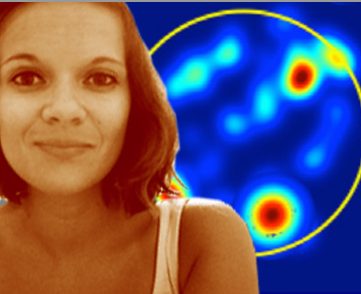Aude Retailleau et al. inCurrent Biology
Spatial Rule Learning and Corresponding CA1 Place Cell Reorientation Depend on Local Dopamine Release. Aude Retailleau and Genela Morris. Current Biology
28 , 1–11, March 19, 2018
This project will be done in the team of Thomas Boraud in the IMN (Team: Physiology and pathophysiology of executive functions) and in collaboration with my previous lab in Israel (Genela Morris, Sagol Department of Neurobiology, University of Haifa, Israel).

Humans and animals are astonishingly efficient at goal-directed navigation through environments rich with potentially significant, multi-dimensional stimuli. Goal-directed behavior is mediated by mental travel through an internal model, or a cognitive map of the environment. The hippocampus is commonly recognized as the neural substrate of this cognitive map. However, for such a map to be useful for planning behavior, it must represent a subset of the attributes of the environment, selecting only those that are relevant to goal-directed behavior.
In this paper, we address the question of selective representation of relevant dimensions in the hippocampal map. Since dopamine is the primary substrate relaying reward related information to various brain regions, and given its known effects on hippocampal plasticity, we hypothesized that local dopaminergic transmission in the hippocampus is responsible for updating the cognitive map to adaptively represent reward-relevant dimensions of sensory inputs.
We show that, as animal learn to correctly assign relevance to reward-relevant spatial dimensions, the hippocampal representation of the environment gradually organizes in an outcome relevant map, and that this organization is a dynamic learning process that is contingent upon reinforcement, mediated by local dopamine release.
| |
| Schema: Labelling of TH positive cells in the dorsal hippocampus and VTA of Th::Cre rat. High-magnification picture of hM4D(Gi)-mCherry expression and RFP staining in dorsal hippocampus (left) after injection of Cre-dependent virus in the VTA (right) of a Th::Cre rat. |
We recorded hippocampal CA1 place cells of rats throughout the learning period of a two-stage spatial navigation task, where successful performance required reliance on a single spatial dimension, and independence on another. After learning, we introduced an extra-dimensional shift, which requires the animals to learn to attend to the previously irrelevant dimension. In brief, we found that each stage of learning induces a gradual shift in the CA1 neurons’ encoding to accurately represent only the reward-relevant dimension. Moreover, dopamine receptors antagonist infusion prevented this remapping, and consequently impaired learning. Thus, as learning progresses, dopamine release rearranges CA1 place cell activity to encode the most relevant aspects of experience for goal directed behavior, shaping the hippocampal cognitive map to enable productive goal attainment. These findings reveal a role for dopamine in acquisition and stabilization of reward relevant cognitive maps, which are crucial for goal-directed behavior.
The past few years have witnessed growing interest in the interaction of the reward system with declarative memory, previously considered segregated. Specifically, reward has been shown to be over represented in hippocampus. However, to our knowledge this is the first report of rearrangement of the full hippocampal map to best accommodate for goal-directed behavior. The dependence of the process on local dopaminergic release in the hippocampus offers the mechanism by which reward related information is incorporated together with the spatial input to correctly form adaptive maps.
However, dopaminergic direct input to hippocampus, is very sparse and poorly described despite intensive search, especially in recent years. But sparseness doesn’t mean inefficiency and the contrast with the reasonably high density of DA receptors in the hippocampus pleads for an actual functional effect.
As far as we know, DA is released into the hippocampus via projections from the Ventral Tegmental Area (VTA) which is involved in reward circuit. Moreveover, recent studies showed also that DA may also be co-released by noradrenergic fibers projecting from the locus coeruleus (LC) which is involved in novelty perception.
To answer this question, I propose to investigate the source of dopamine in hippocampus with a recent chemogenetic tool (DREADDs) in Th::Cre rats which will allow to inhibit specifically TH neurons from the VTA r the LC (Figure) in a spatio-temporal manner.
Aude Retailleau , PostDoc IMN / team: Physiology and pathophysiology of executive functions
Last update 16/05/18
